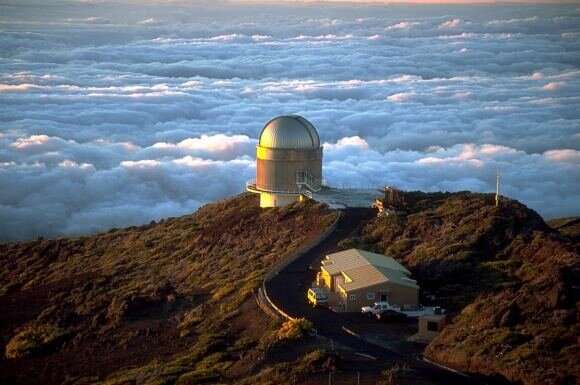The four Unit Telescopes that make up the ESO’s Very Large Telescope, at the Paranal Observatory. Credit: ESO/H.H.Heyer [CC BY 4.0 (http://creativecommons.org/licenses/by/4.0)], via Wikimedia Commons
The next step to understanding exoplanets is to understand their atmospheres better. Astronomers can determine a planet's mass, density, and other physical characteristics fairly routinely. But characterizing their atmospheres is more complicated.
Astronomers have had some success studying exoplanet atmospheres, and spacecraft like the James Webb Space Telescope and the ESA's ARIEL mission will help a lot. But there are thousands of confirmed exoplanets with many more to come, and the Webb has many demands on its time.
Can smaller, ground-based telescopes play a role in understanding exoplanet atmospheres?
Everything we know about exoplanets we learn from light. An exoplanet signals its presence by slightly dimming the light from its star. Astronomers can also gauge the exoplanet's mass, size, and density from starlight, as the planet tugs ever so slightly on its star, causing a minute change in the starlight. It takes powerful, light-gathering telescopes and instruments to measure these fluctuations in the light.
Studying exoplanet atmospheres requires a similar level of technological power and sophistication. Astronomers can determine some of an exoplanet's atmospheric composition by examining the starlight as it passes through the planet's atmosphere. They do this with spectrographs.
The Nordic Optical Telescope (NOT) telescope at Roque de Los Muchachos Observatory in June 2001. The telescope’s primary mirror is 2.56 meters, but the FIES spectrograph adds to the telescope’s capabilities. Credit: By Bob Tubbs – Own work, Public Domain, https://commons.wikimedia.org/w/index.php?curid=79707
The world's largest observatories have high-resolution spectrographs on them. For example, the ESO's Very Large Telescope (VLT) has the ESPRESSO spectrograph. But there are many smaller telescopes than large telescopes like the VLT. The authors of a new paper think that some of those smaller telescopes, when equipped with a powerful spectrograph, could advance the study of exoplanet atmospheres.
The paper's title is "Exoplanet atmospheres at high resolution through a modest-sized telescope. Fe II in MASCARA-2b and KELT-9b with FIES on the Nordic Optical Telescope." Aaron Bello-Arufe, a Ph.D. student in the Exoplanet Group at the Technical University of Denmark, is the lead author. The journal Astronomy and Astrophysics has accepted the paper and will publish it.
FIES stands for FIbre-fed Echelle Spectrograph. It's an Echelle spectrograph like the ESPRESSO instrument on the much larger VLT. It's the latest instrument added to the Nordic Optical Telescope (NOT,) a 2.56-meter telescope at La Palma in the Canary Islands. "Our work demonstrates the feasibility of investigating exoplanet atmospheres with FIES, potentially unlocking a wealth of additional atmosphere detections with this and other high-resolution spectrographs mounted on similar-size telescopes," the authors write.
More information: Aaron Bello-Arufe et al, Exoplanet atmospheres at high resolution through a modest-size telescope. Fe II in MASCARA-2b and KELT-9b with FIES on the Nordic Optical Telescope. arXiv:2203.04969v2 [astro-ph.EP], doi.org/10.48550/arXiv.2203.04969
Provided by Universe Today
![The four Unit Telescopes that make up the ESO’s Very Large Telescope, at the Paranal Observatory. Credit: ESO/H.H.Heyer [CC BY 4.0 (http://creativecommons.org/licenses/by/4.0)], via Wikimedia Commons Smaller, ground-based telescopes can study exoplanet atmospheres, too](https://scx1.b-cdn.net/csz/news/800a/2022/smaller-ground-based-t.jpg)
























